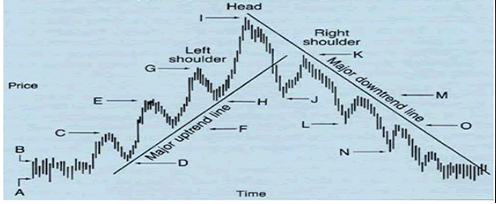London Gold Market Report
from Ben Traynor
BullionVault
Wednesday 1 May 2013, 07:30 EDT
WHOLESALE prices for gold bullion drifted lower Wednesday morning in London, dipping below $1470 an ounce, though it remained slightly up on where it started the week after two-and-a-half days trading in a tight range, with China’s markets closed since last Friday until tomorrow for the Labor Day holiday.
Silver meantime fell towards $24 an ounce to almost exactly where it started the week, while other commodities also fell and US Treasuries were flat ahead of today’s Federal Reserve policy announcement.
“Silver has been trading sideways for the past few sessions, with support at Friday’s low at $23.64 and resistance at Friday’s high at $24.87,” say technical analysts at bullion bank Scotia Mocatta.
“We are looking for a retest of the $22.07 low [of April 16].”
In London, the FTSE 100 ended the morning up on the day, while other European markets were closed for the May 1 holiday.
In the US meantime the Federal Open Market Committee is due to announce its latest decisions on US monetary policy later today.
“We expect the Fed to leave policy unchanged today,” says a note from Standard Bank’s currency team.
“Policymakers are likely to pledge that the Fed will continue to buy $85bn of bonds per month until ‘the outlook for the labor market has improved substantially in a context of price stability’…there is some speculation that the Fed could soften its language, perhaps in an effort to steer the market away from the idea that it could taper, or even end, bond purchases by the close of 2013.”
“There is concern [among Fed policymakers that] the first taper would be misinterpreted as the onset of a tightening cycle”, says Michael Feroli, chief US economist at JPMorgan Chase in New York.
“You want to see how the market is going to digest a cut in purchases” adds Feroli’s colleague Joseph LaVorgna, “so you want to do it in a way that minimizes the disruption.”
“Accommodative policies are generally seen as supportive for gold,” says INTL FCStone metals analyst Ed Meir, “but as the events of the last few weeks have demonstrated, the precious metal does not always move in lockstep with simple expansion in money supply. Instead, it seems to pick up steam either as a result of turmoil in the financial markets or on the back of higher inflation readings, neither of which seem to be prevalent at this particular time.”
“[Gold’s] longer-term trend has been broken to the downside,” says a note from Credit Suisse.
“This fact is significant because in a downtrend the default move of a price is lower in the absence of convincing fundamentals. With fundamentals only neutral, we think some risk still persists.”
Over in Europe, the European Central Bank is due to announce its latest monetary policy decision Thursday.
“Given the latest data, we think that the case for a front-loaded rate cut is strong enough already,” says UBS economist Reinhard Cluse “so that the ECB is likely to cut rates on May 2.”
However, “the chances of fully-fledged quantitative easing from the ECB are low,” adds Nomura economist Nick Matthews.
“The European Central Bank is obviously in a difficult position,” German chancellor Angela Merkel said last week.
“For Germany it would actually have to raise rates slightly at the moment, but for other countries it would have to do even more for more liquidity to be made available and especially for liquidity to reach corporate financing.”
On the currency markets, the Euro rose to a two-month high against the Dollar Wednesday above $1.32.
The Euro gold price meantime fell to €1112 an ounce, close to yesterday’s low and 0.9% down for the week so far.
Growth in China’s manufacturing sector meantime slowed last month, according to official purchasing managers’ index data published Wednesday. China’s official manufacturing PMI fell from 50.9 in March to 50.6 in April, with 50.0 being the threshold between indicating sector contraction and expansion.
Britain’s manufacturing PMI rose to 49.8 last month, up from 48.6 a month earlier. Similar data for the US are due to be released later today.
Ben Traynor
BullionVault
Gold value calculator | Buy gold online at live prices
Editor of Gold News, the analysis and investment research site from world-leading gold ownership service BullionVault, Ben Traynor was formerly editor of the Fleet Street Letter, the UK’s longest-running investment letter. A Cambridge economics graduate, he is a professional writer and editor with a specialist interest in monetary economics. Ben can be found on Google+
(c) BullionVault 2013
Please Note: This article is to inform your thinking, not lead it. Only you can decide the best place for your money, and any decision you make will put your money at risk. Information or data included here may have already been overtaken by events – and must be verified elsewhere – should you choose to act on it.





